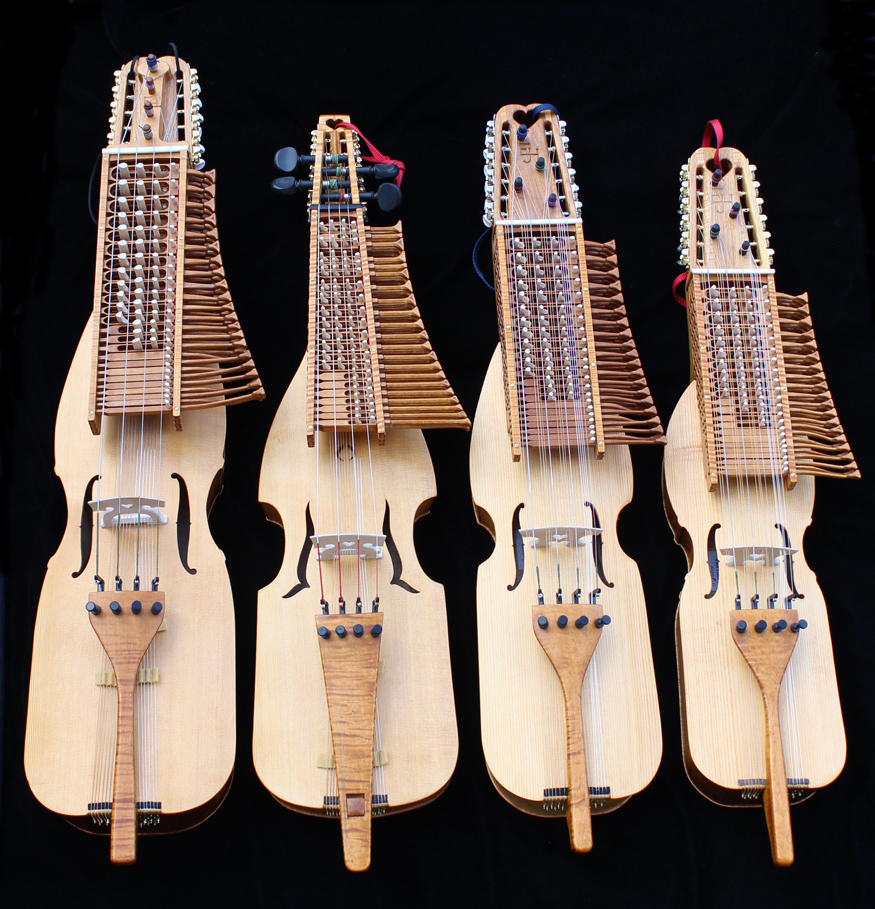
- About Nyckelharpas
- What is a Nyckelharpa?
- Nyckelharpa History
- Modern Nyckelharpas
- Beginner Nyckelharpas
- Tuning a Nyckelharpa
- Desired Characteristics of a Nyckelharpa
- Nyckelharpa strapping
- New Nyckelharpas
- Nyckelharpa Bows
- Nyckelharpa Cases
- Maintenance
- Services / Repairs
- Nyckelharpa Strings
- Nyckelharpa Books & CDs
- Accessories
- Building Nyckelharpas
- Ordering Information
Nyckelharpa strapping
There are several ways to hold a nyckelharpa, with and without a strap. Using a strap is the most common method, although how the strap is positioned on the body is a personal preference. Many use a common guitar strap, some with elastic in it to give some flexibility, but there are other strap configurations that are available, such as the x-strap used by electric guitar players, and a y-strap which has been developed. Below are some of the more common ways straps can be positioned on the body. How you hold the instrument is up to you, but it should be comfortable for playing for longer periods of time and allow your fingers to reach all the keys easily, while keeping the bow in a position that will not run into anything (like your body or the strap).
Traditional Swedish playing position: 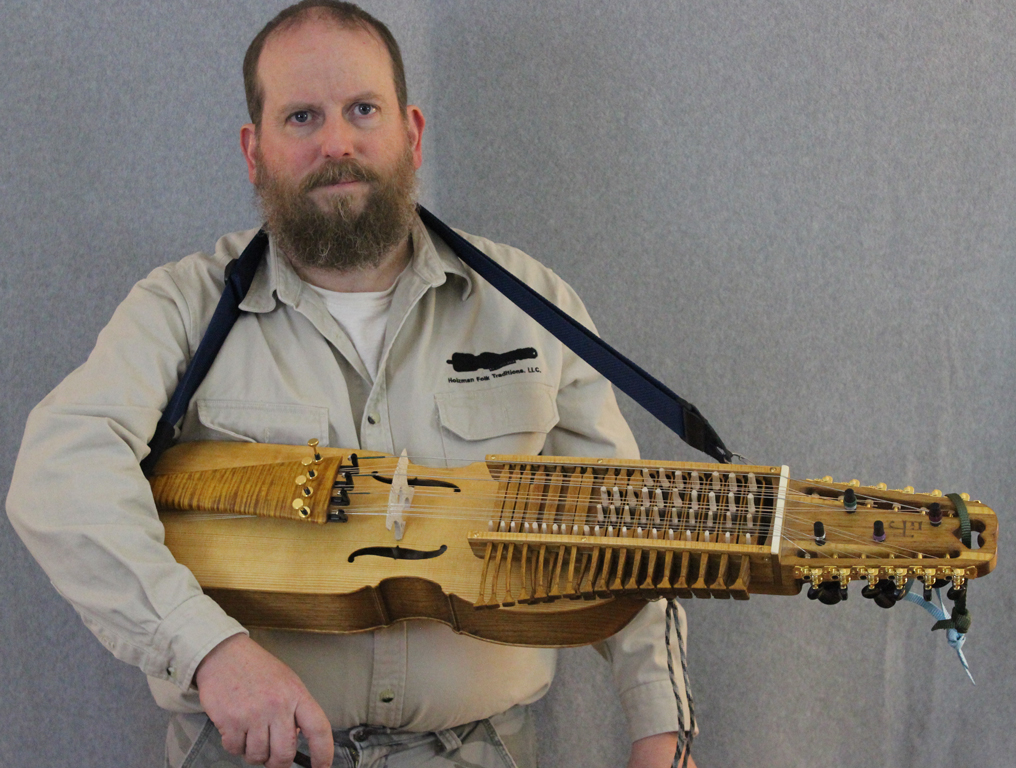 The strap is placed around the neck, going in front of the body on both sides. The strap goes over the tailpiece and your arm, just above the elbow, rests on top of the tailpiece. The strap is attached to the end of the instrument under the tailpiece and at or near the peghead, often through the holes for the tuners. The bridge should be slightly to the peghead side of your nose. The body of the instrument should be slightly tilted so you can just see the tips of the top row of keys. Pressure from the elbow can adjust the angle of the instrument as needed. Some people find this position to be hard on the neck muscles. Care must be taken to not hit the strap with the bow.
The strap is placed around the neck, going in front of the body on both sides. The strap goes over the tailpiece and your arm, just above the elbow, rests on top of the tailpiece. The strap is attached to the end of the instrument under the tailpiece and at or near the peghead, often through the holes for the tuners. The bridge should be slightly to the peghead side of your nose. The body of the instrument should be slightly tilted so you can just see the tips of the top row of keys. Pressure from the elbow can adjust the angle of the instrument as needed. Some people find this position to be hard on the neck muscles. Care must be taken to not hit the strap with the bow.
Jule Bauer playing position: 
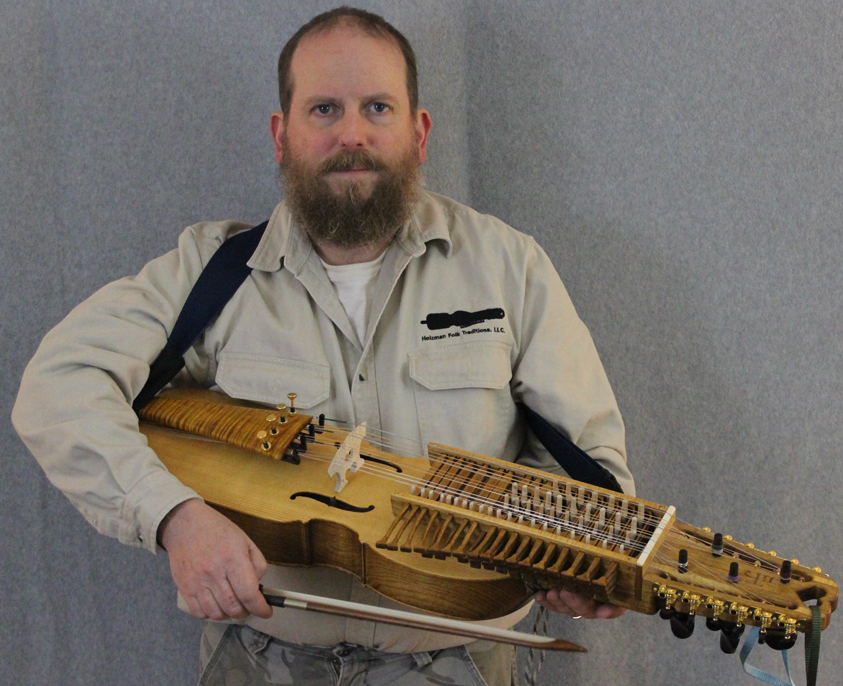 The strap goes over the shoulder by the tailpiece and under the arm by the peghead. The strap goes over the tailpiece and the elbow placement is like the traditional Swedish position. The strap is again attached below the tailpiece and at or near the peghead, or at the base of neck where it connects to the body, if there is space. Having it connect at the base of the neck allows for more freedom of the fingering arm. The position of the instrument is as the traditional Swedish position. This position has the weight of the instrument on the shoulder and back, and keeps the area of bow movement free of obstructions.
The strap goes over the shoulder by the tailpiece and under the arm by the peghead. The strap goes over the tailpiece and the elbow placement is like the traditional Swedish position. The strap is again attached below the tailpiece and at or near the peghead, or at the base of neck where it connects to the body, if there is space. Having it connect at the base of the neck allows for more freedom of the fingering arm. The position of the instrument is as the traditional Swedish position. This position has the weight of the instrument on the shoulder and back, and keeps the area of bow movement free of obstructions.
Guitar playing position: 
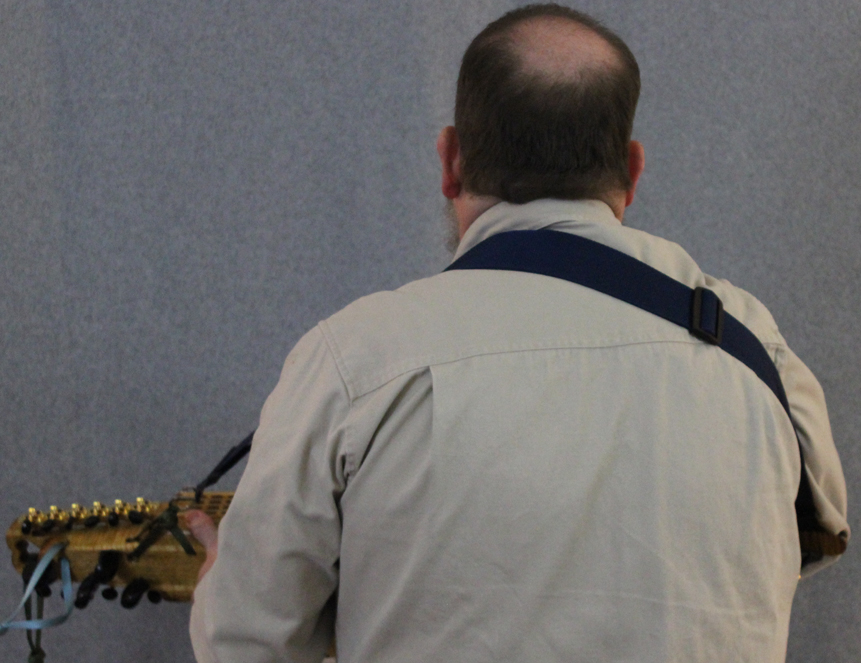 The strap goes under the shoulder by the tailpiece and over the shoulder by the peghead, similar to how a guitar is held. The stap goes over the tailpiece and elbow placement is like the traditional Swedish position. The strap is connected to the instrument below the tailpiece and at or near the peghead, or at the base of the neck where it connects to the body, if there is space. The position of the instrument is as the traditional Swedish position. This positon also gets the weight of the instrument onto the shoulder and back, but the strap can get in the way if not careful.
The strap goes under the shoulder by the tailpiece and over the shoulder by the peghead, similar to how a guitar is held. The stap goes over the tailpiece and elbow placement is like the traditional Swedish position. The strap is connected to the instrument below the tailpiece and at or near the peghead, or at the base of the neck where it connects to the body, if there is space. The position of the instrument is as the traditional Swedish position. This positon also gets the weight of the instrument onto the shoulder and back, but the strap can get in the way if not careful.
Using an X-Strap: 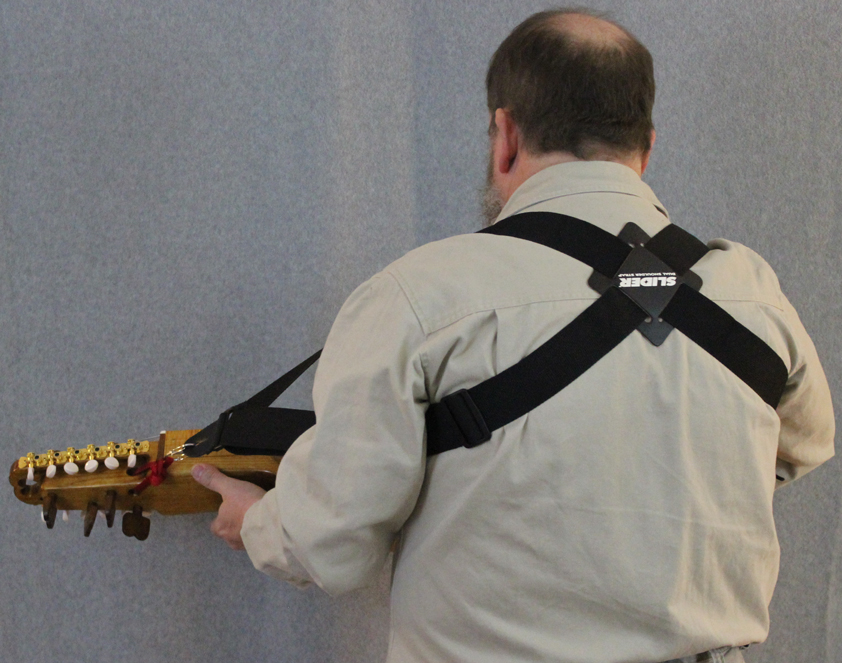
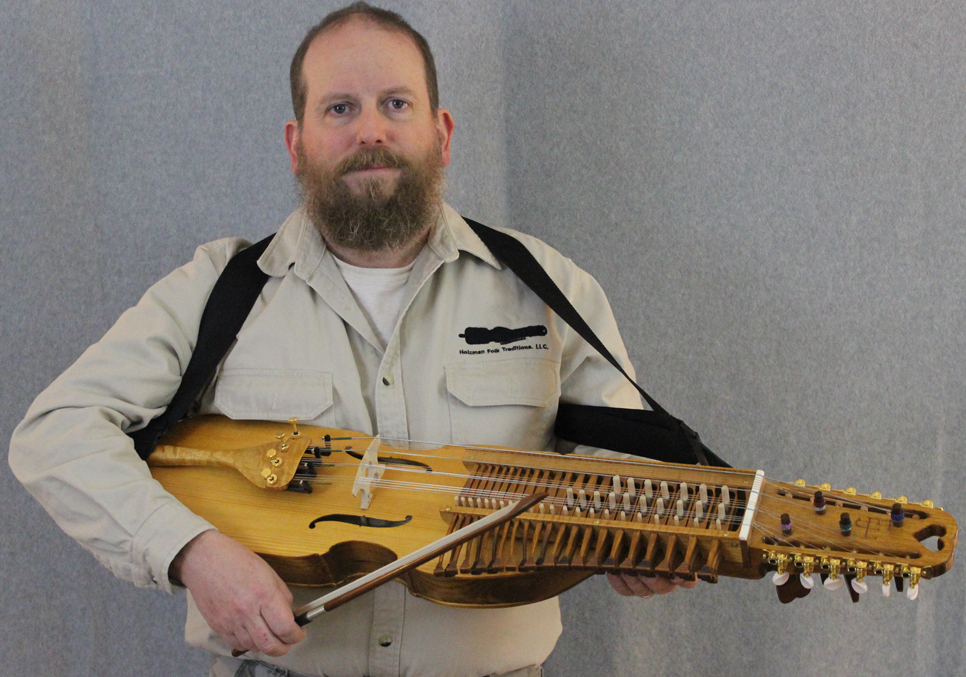 This strap can be difficult to put on, but it may be worth the struggle to get the weight off the neck and can be quite comfortable for some. The strap goes on both sides (front and back) of the shoulders, connecting to the instrument under the tailpiece, and at or near the peghead or at the base of the neck. Both parts of the strap at the tailpiece end is again wrapped on top of the tailpiece and the elbow rests on the tailpiece as the other positions above. The example above is using a "Slider" brand which we carry. The connector can be slid to get the strap into the best position for you, and if you want to, you may want to permanently fasten it in that place so you don't have to adjust it every time.
This strap can be difficult to put on, but it may be worth the struggle to get the weight off the neck and can be quite comfortable for some. The strap goes on both sides (front and back) of the shoulders, connecting to the instrument under the tailpiece, and at or near the peghead or at the base of the neck. Both parts of the strap at the tailpiece end is again wrapped on top of the tailpiece and the elbow rests on the tailpiece as the other positions above. The example above is using a "Slider" brand which we carry. The connector can be slid to get the strap into the best position for you, and if you want to, you may want to permanently fasten it in that place so you don't have to adjust it every time.
Using a Y-Strap: 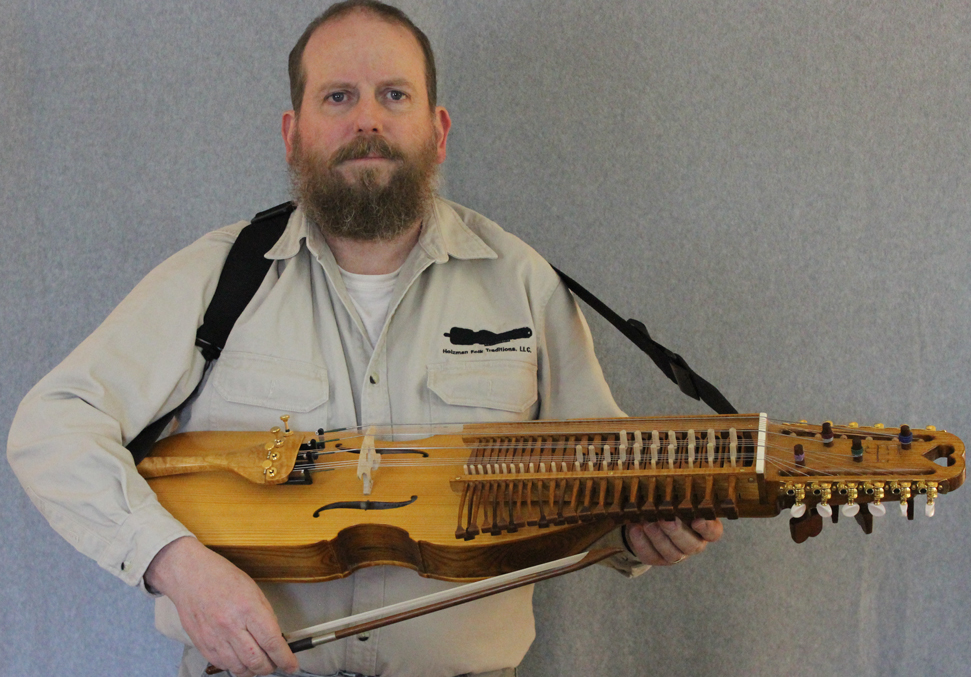
 Similar to the regular guitar straps above, except the strap at the tailpiece end is divided to go around both sides of the shoulder. Not commercially available, Earl's sister makes them for us. There are several places that the strap can be shortened or lengthened for the best fit for you. There is a single strap that connects to the instrument under the tailpiece, which goes over the tailpiece.
Similar to the regular guitar straps above, except the strap at the tailpiece end is divided to go around both sides of the shoulder. Not commercially available, Earl's sister makes them for us. There are several places that the strap can be shortened or lengthened for the best fit for you. There is a single strap that connects to the instrument under the tailpiece, which goes over the tailpiece.
Didier François playing position: The strap is located on the body similar to the Guitar playing position, with the strap over the shoulder nearest the peghead and under the arm closest to the tailpiece. The strap does not go over the tailpiece as in all the positions above. The bow arm is behind the instrument and has free movement, as it is not keeping the instrument in place. This also allows for the use of a longer bow. A violin shoulder rest is often used to keep the instrument away from the body to allow for full vibration of the instrument body and more volume. This also puts the weight of the instrument on the shoulders and back.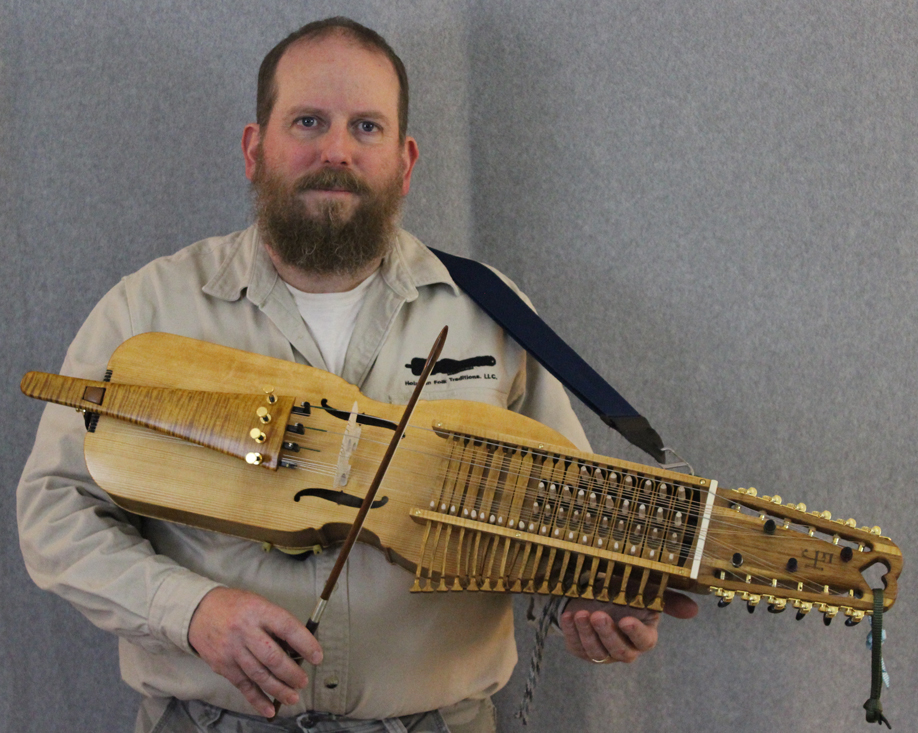
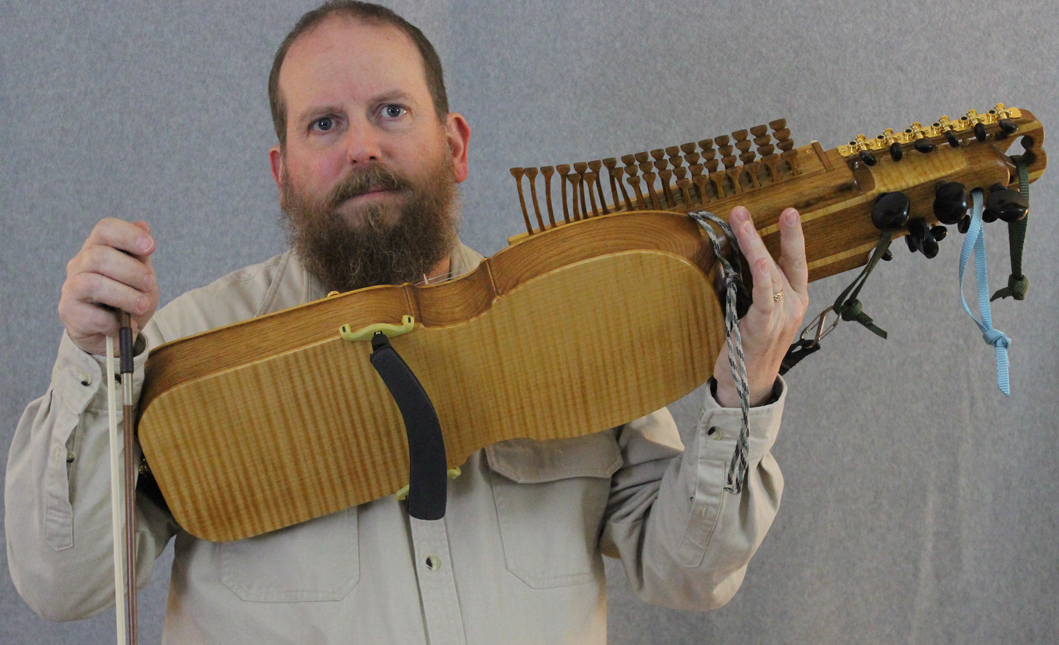
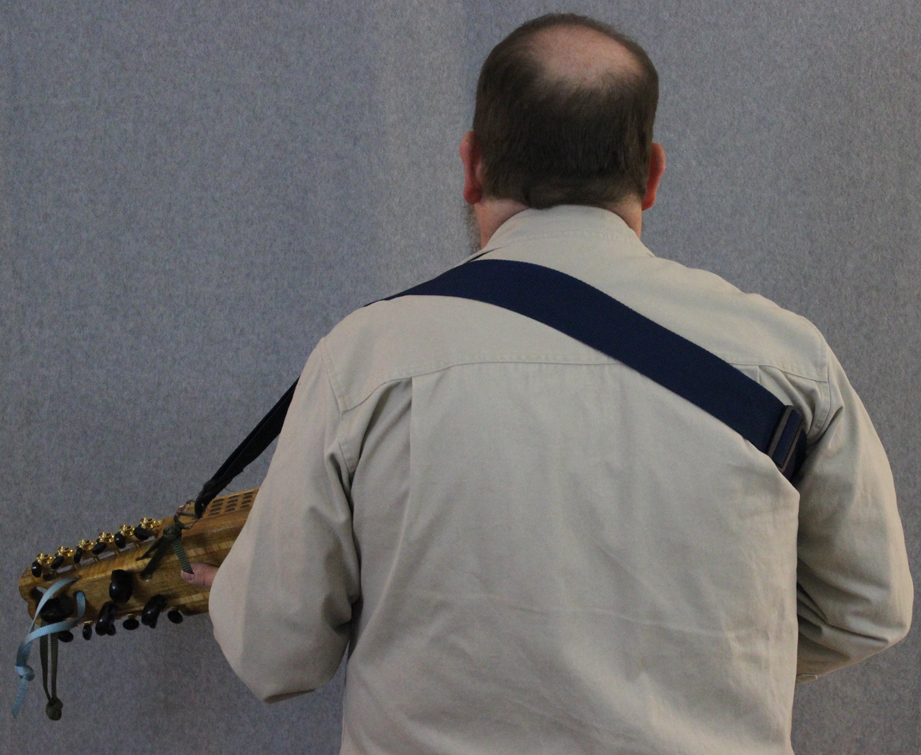
 Where you attach the strap on the instrument can affect the balance on your body. Earl has provided several places on his newer instruments where the strap can be attached on the peg head. He is now making sure there is space under the keybox where the neck meets the body for a strap to be placed there as well. If there is not enough space and a strap is put there, it can push the key box up and cause damage to the keybox.
Where you attach the strap on the instrument can affect the balance on your body. Earl has provided several places on his newer instruments where the strap can be attached on the peg head. He is now making sure there is space under the keybox where the neck meets the body for a strap to be placed there as well. If there is not enough space and a strap is put there, it can push the key box up and cause damage to the keybox.
(Page last updated on 3/11/2017)